Effects of ridgeless planting on the yield, nitrogen uptake and utilization of winter wheat
-
摘要:
为协同提高黄淮海麦区小麦产量和氮素利用效率,于2022—2024年,以传统的小畦大垄种植模式(T1)和大畦小垄种植模式(T2)为对照,设置无垄种植模式(T3)处理,研究不同畦垄种植模式对小麦产量和氮素吸收利用的影响。结果表明:山农56的T3模式较T1、T2单位面积穗数分别提高20.59%、8.90%,花前营养器官储藏干物质转运量分别提高7.50%、9.18%,花后干物质生产量分别提高14.43%、7.27%,产量分别提高13.11%、8.51%;山农43的T3模式较T1、T2单位面积穗数分别提高16.06%、9.74%,花前营养器官储藏干物质转运量分别提高5.66%、9.26%;花后干物质生产量分别提高15.92%、9.67%,从而使得产量分别提高16.17%、10.04%。山农56的T3模式成熟期地上部氮素积累量较T1、T2分别提高11.50%、7.19%,氮素吸收效率分别提高11.50%、7.16%,进而氮素利用效率分别提高13.16%、8.53%;山农43的T3模式成熟期地上部氮素积累量较T1、T2分别提高15.40%、9.07%,氮素吸收效率分别提高15.41%、9.06%,进而氮素利用效率分别平均提高16.20%、10.06%(P<0.05)。结果表明T3模式下地上部氮素积累量和氮素吸收效率的提高是其产量和氮素利用效率协同提升的主要原因。研究结果可为规模化种植下小麦大面积增产增效提供技术参考。
Abstract:Spray and drip irrigation have significantly promoted the spatial layout of planting crops in modern agriculture in recent years. In particular, the irrigation efficiency has also been improved to reduce the labor costs in the large-scale production. Planting without ridges can be expected to serve as a promising potential technology during irrigation. This study aims to explore the effects of ridgeless planting on the yield, nitrogen uptake and utilization of winter wheat. A two-year (2022-2024) field experiment was carried out in Tai’an, Shandong Province, China. The wheat cultivars Shannong 56 (with medium and multi-spike characteristics) and Shannong 43 (with relatively larger spike characteristics) were used as the experimental materials. The planting pattern without ridges (T3) was set as the target treatment. Two control groups were taken as the traditional planting patterns of narrow furrows/wide ridges (T1) and wide furrows/narrow ridges (T2). The sowing areas of T1 and T2 were 28.57% and 10.71% lower than those of the T3 pattern, respectively, due to the presence of the ridges. A systematic investigation was implemented to clarify the influence of ridgeless planting on the grain yield, yield components, accumulation and transformation of above-ground dry matter and nitrogen, nitrogen uptake efficiency (UPE), utilization efficiency (UTE) and NUE of the winter wheat. A comparison was also made on the tradeoff between the wheat edge growth and seeds sowing area under different sowing patterns. The results showed that the edge growth effects in the T3 treatment were relatively lower 28.57% and 10.71% than those in the T1 and T2 treatments, respectively, in terms of the spike number per unit area, dry matter, and nitrogen accumulation at jointing, anthesis and maturity, as well as nitrogen uptake efficiency. The edge growth effects of the above indices were also reduced to promote the land utilization rates, grain yield and NUE, compared with the T1 and T2. The reason was that the absence of the ridge in the T3 treatment reduced the sowing area. Specifically, the spike number per unit area of T3 increased by 18.33% and 9.32%, respectively, compared with the T1 and T2. Meanwhile, the dry matter that remobilized from the vegetation organs at anthesis to the grain increased by 6.58% and 9.22%, respectively. The dry matter production post-anthesis increased by 15.18% and 8.47%, respectively. Thus, the yield of the T3 increased by 14.64% and 9.27% respectively. The above-ground nitrogen accumulation in the T3 treatment increased by 13.45% and 8.13%, respectively. While the UPE increased by 13.45% and 8.11%, respectively. Therefore, the NUE increased by 14.68% and 9.30%, respectively. The correlation analysis showed that the above-ground nitrogen accumulation and the UPE in the T3 pattern concurrently improved the yield and NUE. The finding can also provide a technical reference to increase the yield and the NUE of the winter wheat under large-scale planting.
-
Keywords:
- winter wheat /
- ridgeless planting /
- yield /
- edge growth effects /
- nitrogen uptake and utilization
-
0. 引 言
提高小麦产能是保障国家粮食安全和经济社会稳定发展的关键[1]。近年来,粮食的刚性需求增加与耕地资源不足之间的矛盾日益突出,提高土地利用率和小麦单产任务更加紧迫[2]。
在黄淮海麦区,传统小麦生产中的灌溉方式主要以畦灌为主,常在田间筑起沿麦行方向的畦垄,将灌溉水限制在特定畦田内,推动灌水定向流动,防止灌水流失。同时,畦垄还可调节麦田通风透光条件,发挥作物生长的边行优势,提高边行产量[3]。然而,受限于常规灌水条件、播种机械等的制约,传统麦田畦垄的宽度一般大于1个小麦行距,部分地区甚至是行距的2倍以上。畦面较小、畦垄较宽的问题导致土地空闲面积较大,土地利用率低。有研究发现,畦垄种植下小麦播种面积减少,土地利用率降低17%[4],产量降低5%~15%[5]。同时,依赖自然水源的传统漫灌,效率偏低、水资源浪费严重、人工成本较高[6],限制了农业规模化生产。由于畦垄上无作物覆盖,亦容易出现棵间蒸发加剧、杂草过多等问题[7-9]。
近年来,微喷灌、滴灌和立杆式、地埋式、自走式喷灌等灌溉技术发展迅速且日益成熟,在实现精准灌水施肥[10]、节能减排[11]、扩大种植区域[12-13]、提升复种指数[14]、作物增产增收[15]等多个方面成效显著。灌溉技术的进步亦推动了农业生产空间布局、组织形态方面的改革[16],尤其是灌溉效率的提高和人工成本的降低加快了规模化经营的推进[17],而在此过程中,畦垄在灌溉方面的作用逐渐弱化,无垄种植模式逐渐推广应用。
无垄种植有利于增加小麦播种面积,亦可通过设施灌溉有效节水、省工省时[4]。但是,由于无垄种植后小麦不同播种幅带间的距离缩小,相邻播种幅带间的光照、温度、湿度等环境条件会发生明显变化,进而影响边际效应的形成,最终影响产量和养分利用效率[3]。明确无垄种植对小麦产量和产量形成、氮素吸收利用的影响,对于该技术的进一步推广应用具有重要意义。
基于此,本研究以中多穗型品种山农56和大穗型品种山农43为试验材料,对比分析以不同种植模式(传统小畦大垄种植模式(T1)、大畦小垄种植模式(T2)、无垄种植模式(T3))下的小麦边行优势的消长程度与土地播种面积的权衡为切入点,研究不同种植模式对小麦产量及其构成和氮素吸收利用的影响,以期为规模化种植条件下小麦大面积增产增效提供理论依据和技术支持。
1. 材料与方法
1.1 试验地概况
试验于2022—2024年小麦生育季在山东省泰安市岱岳区马庄镇的山东岱岳小麦科技小院试验田进行。试验点为温带大陆性季风气候,2022—2023年和2023—2024年小麦生育季降雨量分别为158.9 (与往年持平)、98.7 mm(低于常年),平均气温分别为11.2、11.8℃,2022—2023年和2023—2024年生育季播前0~1 m土层内无机态氮(NO3--N和NH4+-N)积累量分别为149.96和155.33 kg/hm2。播前其他基础地力指标如表1所示。
表 1 2022—2024生育季冬小麦播前土层基础地力Table 1. Nutrient status of soil before seeding in 2022—2024年份
Year土层
Soil layer/
cm有机质
Organic
matter/
(g·kg−1)全氮
Total
N/(g·kg−1)碱解氮
Alkali-
hydrolysable
N/(mg·kg−1)有效磷
Available
P/(mg·kg−1)速效钾
Available
K/(mg·kg–1)2022—2023 0~20 20.07 1.76 103.54 34.25 122.47 >20~40 15.42 1.02 61.22 25.33 86.72 2023—2024 0~20 19.45 1.71 104.8 35.09 127.64 >20~40 13.83 0.98 63.09 26.38 80.44 1.2 试验设计
试验以中多穗型品种山农56和大穗型品种山农43为供试材料,设置小畦大垄种植模式(T1)、大畦小垄种植模式(T2)和无垄种植模式(T3)共3个处理。试验采用裂区设计,主区为品种,裂区为种植方式,3次重复。T1模式畦宽1.75 m,垄宽0.5 m,畦面1.25 m,播种6行小麦;T2模式畦宽2.8 m,垄宽0.3 m,畦面2.5 m,播种12行小麦;T3模式没有畦垄,播种规格与T2模式一致。各小区长度均为60 m,因畦垄设计差异,T1模式总面积105 m2,畦垄占地30 m2,用于播种的畦面面积75 m2;T2模式总面积168 m2,畦垄占地12 m2,用于播种的畦面面积150 m2;T3模式总面积150 m2,无畦垄占地,用于播种的畦面面积150 m2。本研究中,土地利用率为实际播种面积占可用耕地面积(小区面积)的比值,T1、T2、T3模式分别为71.43%、89.29%、100%,T1、T2较T3模式分别降低28.57%、10.71%。
3种模式小麦行距均为20.83 cm,且同一品种每行株距相同,即每行出苗数一致。结合品种分蘖成穗特性差异,T3模式下山农56和山农43设计种植密度分别为2.40×106、3.60×106株/hm2,根据畦垄占地面积折算,T1、T2模式下山农56的种植密度分别为1.71×106、2.14×106株/hm2,山农43分别为2.57×106、3.21×106株/hm2。
T1和T2模式采用生产上传统的畦灌方式灌水,参考前人研究结果,灌水时的改水成数为90%[18-20],即当水流前锋到达畦长长度的90%位置时停止灌水;T3模式参考YAO等[21],采用微喷灌方式灌水。2022—2023生育季分别于播后、拔节期、开花期进行灌溉;2023—2024生育季因春季降雨偏少,分别于播后、拔节、抽穗、灌浆初期灌溉。试验各处理施氮量均为240 kg/hm2,基追比4∶6,基肥于整地前撒施,追肥于拔节期结合拔节水施入,肥料类型均为尿素。磷钾肥全部基施,施用量分别为90 (以P2O5计)和75 kg /hm2 (以K2O计)。试验于2022年10月19日和2023年10月17日播种,2023年6月10日、2024年6月6日收获。其他管理措施与常规大田同。
1.3 测定项目与方法
1.3.1 产 量
收获前选择长势均匀的区域,划出2 m长×6行小麦宽的区域,分行收获测产,T1、T2模式包含由边行向内部的连续6行小麦;T3模式为随机选取的均匀一致的连续6行小麦。结合各处理占地面积计算单位面积产量。测产的样品脱粒前随机取150个麦穗用于穗粒数调查,脱粒后随机取籽粒样品用于千粒质量测定。
1.3.2 干物质和氮素积累转运相关指标计算
播后选择长势均匀一致的区域划定行长度1 m、6行小麦的区域,拔节前调查春季最大分蘖数,成熟期调查单位面积穗数。于拔节期、开花期、成熟期进行干物质取样,每次取行长0.5 m、6行小麦区域的植株,参考华一帆等[22]和DAI等[23]的方法进行器官分样、处理以及干物质和氮素积累转运、氮素吸收利用相关指标的计算。区域选择同1.3.1,群体指标均以该处理总占地面积进行计算。
1.3.3 加权平均边行优势指数
参考欧行奇等[24]关于边行优势指数的定义,计算T1、T2模式基于其播种土地面积(不含畦垄占地面积)的加权平均边行优势指数(weight average edgegrowth effects,WAEGE)W。以产量为例,其计算方法为
$$ W=\frac{Q-T}{T}\times100\% $$ (1) 式中Q为该模式各行小麦群体产量之和,kg/hm2;T为T3模式各行小麦群体产量之和,kg/hm2。
1.4 数据处理和分析
采用Microsoft Excel 2019进行数据预处理,DPS 7.05进行数据统计分析,采用LSD(P<0.05)判别法进行差异显著性检验,采用Origin 2021软件绘图。
2. 结果与分析
2.1 种植模式对单位面积小麦产量和产量构成的影响
种植模式显著影响小麦单位面积产量(图1)。与T1、T2相比,两生育季T3模式下山农56分别平均增产13.11%、8.51%,山农43分别平均增产16.17%、10.04%。与T1相比,T2模式下山农56和山农43分别平均增产4.24%、5.57%。其中,山农43的产量增幅略高于山农56。两生育季,山农56在T1、T2模式下较T3的产量加权平均边行优势指数分别为23.78%、3.22%,山农43分别为20.52%、1.78%,均低于T1、T2模式,较T3模式分别降低28.57%、10.71%的土地利用率(P<0.05),表明T1、T2模式的边行优势无法弥补土地播种面积的降低,由此导致产量低于T3模式。
![]() 图 1 不同畦垄种植模式对冬小麦产量和产量构成因素的影响注:T1,小畦大垄种植模式;T2,大畦小垄种植模式;T3,无垄种植模式。SN56:山农56;SN43:山农43。不同小写字母代表同年同品种的同一指标在3种模式间差异显著(P<0.05),下同。Figure 1. Effects of different planting patterns on yield and yield components of winter wheatNote: T1, planting pattern of narrow furrows and wide ridges; T2, planting pattern of wide furrows and narrow ridges; T3, planting pattern without ridge. SN56: Shannong56, SN43: Shannong43. Different lowercase letters within the same parameter and cultivar during the same year represent significant differences at the P<0.05 level, the same as below.
图 1 不同畦垄种植模式对冬小麦产量和产量构成因素的影响注:T1,小畦大垄种植模式;T2,大畦小垄种植模式;T3,无垄种植模式。SN56:山农56;SN43:山农43。不同小写字母代表同年同品种的同一指标在3种模式间差异显著(P<0.05),下同。Figure 1. Effects of different planting patterns on yield and yield components of winter wheatNote: T1, planting pattern of narrow furrows and wide ridges; T2, planting pattern of wide furrows and narrow ridges; T3, planting pattern without ridge. SN56: Shannong56, SN43: Shannong43. Different lowercase letters within the same parameter and cultivar during the same year represent significant differences at the P<0.05 level, the same as below.在产量构成因素方面,与T1、T2相比,T3模式下两生育季山农56的单位面积穗数分别平均提高20.59%、8.90%,山农43分别平均提高16.06%、9.74%;T3模式下山农56的穗粒数、千粒质量较T1分别平均降低3.80%、2.40%(P<0.05),而与T2均无显著差异;山农43的穗粒数、千粒质量在3种种植方式间均无显著差异(图1)。表明T3模式主要通过提高单位面积穗数实现增产。
2.2 种植模式对不同麦行小麦产量和产量构成因素的影响
种植模式显著影响不同麦行小麦产量(图2)。T1模式下山农56和山农43的边1行至边3行的产量表现出明显的边行优势,但其优势效应从边行向内行逐渐降低;T2模式下山农56的边1行、边2行表现出明显的产量边行优势,而山农43仅边1行呈现边行优势。两品种T1模式下的产量加权平均边行优势指数分别为23.78%、20.52%;T2模式下分别为3.22%、1.78%。
T1模式下边行优势对穗数的影响与产量基本一致,T2模式下山农56在边1行和边2行、山农43在边1行呈现一定的穗数边行优势,其他行与内行穗数接近(图2)。T1模式下两品种穗数加权平均边行优势指数分别为16.05%、20.78%,T2模式分别为2.83%、2.18%。
T1模式下山农56的穗粒数、千粒质量在各行均表现出一定的边行优势,加权平均边行优势指数分别为3.77%和2.38%,T2模式下仅边1行、边2行的穗粒数和边1行的千粒质量略高于内行,而T1、T2模式下山农43的穗粒数、千粒质量在各行间均无显著差异,未表现出边行优势(图2),这可能与其边行穗数增加有关。
2.3 种植模式对小麦地上部干物质积累的影响
如图3所示,种植模式显著影响小麦拔节期、开花期和成熟期干物质积累量,且T3显著高于T1、T2模式。其中,与T1相比,T3模式下两生育季山农56的拔节、开花和成熟期干物质积累量分别平均增长29.69%、22.15%、19.07%,山农43分别增长32.22%、23.76%、20.70%;与T2相比,T3模式下山农56分别平均增长9.40%、8.26%、7.87%,山农43分别增长10.19%、10.06%、9.91%(P<0.05)。整体而言,山农43的干物质积累量增幅高于山农56,但随生育进程的推进两品种干物质积累量在种植模式间的差异均逐渐缩小。
两生育季T1、T2模式下小麦地上部干物质积累量均表现出一定的加权平均边行优势。在拔节期、开花期和成熟期,两生育季山农56的T1模式干物质积累量加权平均边行优势指数分别平均为7.95%、14.61%、17.58%,T2模式分别为2.38%、3.46%、3.82%;山农43的T1模式分别平均为5.89%、13.12%、15.99%,T2模式分别为1.64%、1.76%、1.90%。整体而言,山农43的T1、T2模式干物质积累量加权平均边行优势指数低于山农56,但随生育进程的推进两品种T1、T2模式在干物质积累方面的边行优势均逐渐增大。
2.4 种植模式对小麦干物质转运的影响
两生育季山农56的T3模式花前干物质转运量比T1、T2模式分别平均增加7.50%和9.18%,山农43分别增加5.66%和9.26%。山农56、山农43的T3模式花前营养器官干物质转运率较T1模式分别平均降低12.00%和14.63%,花前干物质转运对籽粒贡献率分别降低4.93%和7.47%(P<0.05),但两指标均与T2模式无显著差异(表2)。
表 2 不同畦垄种植模式对冬小麦花前干物质转运和花后干物质生产的影响Table 2. Effects of different planting patterns on DM at anthesis remobilization and production after anthesis of winter wheat年份
Year品种
Cultivar模式
Pattern花前营养器官干物质
向籽粒转运花后干物质生产量 DM remobilized from
vegetation organs at
anthesis to grainDM assimilation
after anthesis转运量 转运率 贡献率 生产量 贡献率 Amount/
(kg·hm−2)Rate/
%Contribution/
%Amount/
(kg·hm−2)Contribution/
%2022—
2023山农
56T1 1866.98b 16.50a 20.08a 7430.79c 79.92b T2 1810.96b 14.26b 18.69b 7879.31b 81.31a T3 2019.98a 14.66b 19.30b 8446.45a 80.70a 山农
43T1 1846.01b 14.58a 18.74a 8006.15c 81.26b T2 1762.04b 12.45b 17.25b 8450.49b 82.75a T3 1959.03a 12.57b 17.44b 9275.31a 82.56a 2023—
2024山农
56T1 1979.19b 16.16a 19.28a 8287.67c 80.72b T2 1975.82b 14.22b 18.19b 8889.23b 81.81a T3 2114.55a 14.09b 18.14b 9540.91a 81.86a 山农
43T1 1615.65b 11.63a 15.17a 9031.19c 84.83b T2 1585.37b 10.09b 14.23b 9557.88b 85.77a T3 1698.47a 9.83b 13.95b 10474.14a 86.05a T3模式显著提高小麦花后干物质生产量(表2)。两生育季山农56的T3模式花后干物质生产量比T1、T2模式分别增加14.43%和7.27%,山农43分别增加15.92%和9.67%(P<0.05)。山农56、山农43的T3模式花后干物质生产对籽粒贡献率较T1分别平均提高1.21%和1.52%(P<0.05),但均与T2无显著差异。表明,T3模式小麦产量的增加,主要源于花前营养器官储藏干物质向籽粒转运量和花后干物质生产量的共同提高。
2.5 种植模式对小麦地上部氮素积累的影响
如图4所示,种植模式显著影响小麦拔节期、开花期和成熟期氮素积累量,且T3显著高于T1、T2模式,其中,与T1相比,T3模式下两生育季山农56拔节、开花和成熟期氮素积累量分别平均增长16.98%、11.98%、11.50%,山农43分别增长24.33%、16.33%、15.40%;与T2相比,T3模式下山农56分别平均增长8.76%、7.60%、7.19%,山农43分别增长9.27%、9.20%、9.07%(P<0.05)。
整体而言,山农43的氮素积累量增幅高于山农56,但随生育进程的推进两品种氮素积累量在种植模式间的差异均逐渐缩小。
两生育季T1、T2模式下各生育时期小麦地上部氮素积累量表现出一定的加权平均边行优势。在拔节期、开花期和成熟期,两生育季山农56的T1模式氮素积累量加权平均边行优势指数分别平均为19.68%、25.02%、25.56%,T2模式分别为2.98%、4.09%、4.51%;山农43的T1模式分别平均为12.61%、20.35%、21.31%,T2模式分别为2.50%、2.56%、2.70%。整体而言,山农43的T1、T2模式氮素积累量加权平均边行优势指数低于山农56,但随生育进程的推进两品种T1、T2模式在氮素积累方面的边行优势均逐渐增大。
2.6 种植模式对小麦氮素转运的影响
如表3所示,种植模式显著影响小麦花前营养器官氮素向籽粒的转运和花后氮素吸收。两生育季山农56的T3模式花前营养器官氮素向籽粒转运量比T1、T2模式分别平均增长11.36%、7.57%,山农43分别增长14.47%、9.85%;山农56的T3模式花后氮素吸收量比T1、T2模式分别平均增长9.10%、4.98%,山农43分别增长10.97%、8.34%(P<0.05)。两品种花前营养器官氮素转运和花后氮素吸收对籽粒氮素的贡献率在不同种植模式间均无显著差异。
表 3 不同畦垄种植模式对小麦花前营养器官贮藏氮素转运和花后氮素吸收的影响Table 3. Effects of different planting patterns on nitrogen (N) at anthesis remobilization and N assimilation after anthesis of winter wheat年份
Year品种
Cultivar模式
Pattern花前氮素向籽粒转运 花后氮素吸收量
N assimilation after anthesis籽粒氮素积累量
Grain N
accumulation/
(kg·hm−2)Remobilized N from vegetation organs at anthesis to grain 转运量 转运率
Rate/%贡献率
Contribution/%吸收量
Amount/(kg·hm−2)贡献率
Contribution/%Amount/(kg·hm−2) 2022—
2023山农
56T1 161.51b 74.05a 77.74a 46.26b 22.26a 207.76c T2 165.57b 73.56ab 77.56a 47.92b 22.44a 213.49b T3 179.06a 73.30b 78.18a 49.98a 21.82a 229.04a 山农
43T1 191.76c 76.75a 77.69a 55.06b 22.31a 246.83c T2 199.20b 75.25b 77.97a 56.27b 22.03a 255.47b T3 218.38a 75.30b 78.16a 61.04a 21.84a 279.42a 2023—
2024山农
56T1 195.56b 81.83a 81.47a 44.49b 18.53a 240.05c T2 204.08b 81.43b 81.48a 46.39b 18.52a 250.47b T3 218.57a 81.69b 81.68a 49.03a 18.32a 267.60a 山农
43T1 216.82c 81.73a 80.79a 51.54b 19.21a 268.36c T2 226.58b 79.78b 81.06a 52.93b 18.94a 279.50b T3 249.31a 80.63b 81.32a 57.26a 18.68a 306.58a 种植模式显著影响小麦籽粒氮素积累量。两生育季,山农56的T3模式比T1、T2模式分别平均增长10.90%、7.04%,山农43分别增长13.74%、9.54%(P<0.05)。山农56的T1、T2模式籽粒氮素积累量加权平均边行优势指数分别为26.24%、4.63%,山农43分别为23.08%、2.25%。
2.7 种植模式对小麦氮素吸收利用的影响
种植模式显著影响小麦氮素利用效率(图5)。与T1、T2模式相比,T3模式下两生育季山农56的氮素利用效率分别平均提高13.16%、8.53%,山农43分别平均提高16.20%、10.06%(P<0.05)。山农56的T1、T2模式氮素利用效率加权平均边行优势指数分别为23.82%、4.07%,山农43分别为22.61%、2.19%。
无垄种植显著提高小麦氮素吸收效率,但对氮素内在利用效率无显著影响(图5)。与T1、T2模式相比,T3模式下两生育季山农56的氮素吸收效率平均分别增长11.50%、7.16%,山农43平均分别增长15.41%、9.06%(P<0.05)。山农56的T1、T2模式氮素吸收效率加权平均边行优势指数分别为25.56%、4.51%,山农43分别为21.31%、2.70%。相关分析表明,小麦产量、氮素利用效率分别与氮素吸收效率、成熟期地上部氮素积累量呈显著正相关关系(P<0.01)。
3. 讨 论
3.1 种植模式对冬小麦产量与产量构成因素的影响
边际效应广泛存在于农作物生产过程中,小麦的边际效应通常表现为边行优势,这主要归因于边行小麦分配到的更多的太阳能、良好的通风和较少的养分竞争,有利于小麦穗数和干物质积累量的增加,从而提高边行小麦产量[25]。传统生产中畦垄的存在,会导致靠近畦垄的麦行植株产生一定的边行优势[26],而无垄种植模式则无边行优势发生,但畦垄的去除大幅度增加了播种面积。从土地利用率和单位土地面积产量角度看,有垄种植下边行优势的高低与无垄种植下提高的土地播种面积间的权衡,是不同种植模式产量产生差异的关键。
张翼[27]和鞠正春等[5]的研究发现,无垄种植可有效提高小麦产量和土地利用率,但增产原因尚未明晰。陈雨海等[28]的研究认为,小麦产量的边行优势不能弥补播种土地面积的减少。本研究发现,两品种在T1模式下边1行至边3行、T2模式下的边1行和边2行均表现出了显著的边行优势,但T1、T2模式较T3的产量加权平均边行优势指数(分别平均为22.15%、2.50%)均低于T1、T2模式较T3分别降低的28.57%、10.71%的土地利用率(P<0.05),由此表明T1、T2模式的产量边行优势均不能弥补畦垄占地带来的播种面积的减少,从而使得T3模式产量显著高于T1、T2模式。同时,研究发现中多穗型品种山农56的产量边行优势大于大穗型品种山农43,这与赵秉强等[29]的研究相似,但T3模式下山农43产量增幅略高于山农56的结果也表明,边行优势偏小的品种更有利于发挥小麦无垄种植模式的增产优势。
边行小麦的产量构成因素亦呈现出一定的边际效应,陈雨海等[28]和欧行奇等[30]的研究发现边行小麦穗数、穗粒数和千粒质量均高于内行,但边行增产的主要因素是穗数的提高,其次是穗粒数,再次是千粒质量。然而,另有研究认为,边行小麦也存在穗数、穗粒数和千粒质量间的群体与个体矛盾[29],如马宏亮等[31]的研究发现边行小麦的穗数、穗粒数显著高于内行,但千粒质量差异不显著。本研究中,虽然两品种的穗数在T1、T2模式下均表现出一定边行优势(较T3的穗数加权平均边行优势指数分别平均为18.42%、2.51%),但仍低于T1、T2模式较T3分别降低的28.57%、10.71%的土地利用率(P<0.05),由此使得无垄种植的T3模式穗数显著高于T1、T2模式。在个体方面,山农56的穗粒数、千粒质量在T1模式下表现出较小的加权边行优势(分别为3.77%、2.38%),使得T3模式的穗粒数和千粒质量略低于T1,但其降低幅度远低于单位面积穗数相对于T1模式的提升幅度;山农56在T2模式和山农43在T1、T2模式下的穗粒数、千粒质量均未表现出加权边行优势,故其值均与T3无显著差异。由此可知,无垄种植的T3模式主要是通过提高单位面积穗数实现增产。
3.2 种植模式对冬小麦干物质和氮素积累转运的影响
一定的地上部干物质和氮素积累量是小麦高产的基础[32],而小麦干物质的生产和氮素的吸收积累亦存在一定的边际效应[33]。边行小麦较优的光照和养分供给条件有利于促进个体发育、水肥吸收,提高干物质生产与氮素积累[25, 34]。由于不同生育阶段小麦群体数量与个体发育间的竞争矛盾激烈程度不同,所以边行优势的大小也存在一定差异。有研究表明,小麦干物质积累量的边行优势在生育前期表现不显著,拔节[35]或孕穗后[31]则呈现出明显的边行优势。本研究中,小麦拔节期、开花期和成熟期的干物质和氮素积累量在T1、T2模式下均表现出一定的加权平均边行优势,且随生育进程的推进边行优势逐渐增大,这可能与生育前期植株个体相对较小、竞争较弱,而中后期个体逐渐增大、茎蘖穗竞争加剧有关[36]。但是,两品种在T1、T2模式下较T3的干物质和氮素积累量加权平均边行优势指数同样远低于T1、T2模式较T3分别降低的28.57%、10.71%的土地利用率(P<0.05),亦表明边行优势均不能弥补畦垄占地带来的播种面积以及干物质和氮素积累的减少,从而使得无垄种植的T3模式各生育时期干物质和氮素积累显著高于T1、T2模式。但由于中后期T1、T2模式边行优势逐渐增大,所以随生育进程的推进T3模式干物质和氮素积累的提高幅度逐渐缩小。同时,由于山农43在T1、T2模式的干物质和氮素积累量加权平均边行优势指数低于山农56,所以使得其在T3模式的干物质、氮素提高幅度高于山农56,亦为其较高的产量增幅奠定了基础。
小麦产量和籽粒氮素积累主要源于花前营养器官储藏的碳水化合物和氮素向籽粒的转运,以及花后生产的光合产物和吸收的氮素[37]。前人关于种植密度[38]、氮肥水平[39]、播种苗带宽度[22]、秸秆还田[40]等栽培措施和高温[41]、遮阴[42]、盐碱[43]等非生物胁迫对小麦碳氮转运和花后同化吸收的研究较多,整体认为提高花前干物质、氮素向籽粒转运或(和)提高花后氮素吸收量、改善花后群体光合性能、促进光合物质生产均有利于提高产量和籽粒氮素积累量[44]。本研究发现,相对于常规的T1、T2畦垄种植,无垄种植的T3模式通过提高花前营养器官储藏干物质和氮素向籽粒的转运量,以及提高花后光合物质生产量、氮素吸收量,实现小麦产量和籽粒氮素积累量的提高,这可能主要与T3模式提高的群体数量提高了光合物质生产能力和氮素吸收、储存能力有关。
3.3 种植模式对冬小麦氮素吸收利用的影响
氮素是植物生长的重要元素,也是农业生态系统中主要限制营养元素之一,提高氮素利用效率对于作物生长发育和农业生态环境保护有着重要意义[10]。株行距配置、苗带宽度等决定作物田间分布的措施显著影响小麦氮素吸收利用[45-46]。小麦的氮素利用可分解为土壤中供给氮素的吸收和冠层利用吸收的氮素进行籽粒生产的两个过程,即氮素吸收效率和氮素内在利用效率[47]。
氮素吸收效率与土壤氮素供给、根系吸收能力和地上部氮素储存能力有关[48],是吸氮量与供氮量的比值[47],本研究中,不同处理间土壤供氮量一致,所以各处理间氮素吸收效率的异同主要与氮素吸收积累量的差异有关。因此,虽然T1、T2模式地上部氮素积累量的边行优势使得其氮素吸收效率亦表现出一定的边行优势,但其优势指数不能弥补畦垄占地带来的播种面积以及氮素吸收效率的减少,从而使得无垄种植的T3模式的氮素吸收效率显著高于T1、T2模式。
氮素内在利用效率与冠层光氮分布与匹配程度、光合氮素利用效率等指标有关系,是产量与吸氮量的比值[47]。一般情况下,群体较大时氮素内在利用效率相对偏低[23, 49]或维持在一定水平[44, 50]。本研究中,氮素内在利用效率在3种种植模式间无显著差异,表明畦垄的有无并不影响小麦冠层利用吸收的氮素进行籽粒生产的能力和效率。
优化麦株田间分布有利于提高小麦氮素利用效率[45-46]。本研究中,虽然T1、T2模式的氮素利用效率表现出一定的加权边行优势,但其优势指数不能弥补畦垄占地带来的播种面积以及氮素利用效率的减少,从而使得无垄种植的T3模式的氮素利用效率显著高于T1、T2模式。产量、氮素利用效率分别与氮素吸收效率和地上部氮素积累量的正相关关系也表明,无垄种植的T3模式通过提高全生育期的地上部氮素积累量和氮素吸收效率,实现了产量和氮素利用效率的协同提升,这与前人在适度密植、优化播种方式下的结论相似[47]。未来,无垄种植的T3模式在单位面积穗数增加的前提下,如何通过优化冠层光氮垂直与水平分布和光氮匹配提高氮素内在利用效率,是进一步协同提高小麦产量和氮素利用效率的重要突破方向之一。
4. 结 论
1)虽然传统畦垄种植模式(T1、T2)在单位面积穗数、产量、不同生育时期干物质和氮素积累、氮素吸收效率、氮素利用效率等方面存在一定的边行优势,但其加权平均边行优势不能弥补T1、T2模式畦垄占地带来的播种面积和相关指标的减少,从而使得山农56无垄种植的T3模式较T1、T2产量分别提高13.11%、8.51%,氮素利用效率分别提高13.16%、8.53%,山农43产量分别提高16.17%、10.04%,氮素利用效率分别提高16.20%、10.06%。
2)T3模式通过提高两品种T1、T2模式下单位面积穗数(山农56分别为20.59%、8.90%,山农43分别为16.06%、9.74%)、以及协同提高花前干物质向籽粒的转运(山农56分别为7.50%、9.18%,山农43分别为5.66%、9.26%)和花后干物质生产(山农56分别为14.43%、7.27%,山农43分别为15.92%、9.67%)实现增产,亦是通过提高全生育期的地上部氮素积累量(山农56分别为11.50%、7.19%,山农43分别为15.40%、9.07%)和氮素吸收效率(山农56分别为11.50%、7.16%,山农43分别为15.41%、9.06%),实现了产量和氮素利用效率的协同提升。
-
图 1 不同畦垄种植模式对冬小麦产量和产量构成因素的影响
注:T1,小畦大垄种植模式;T2,大畦小垄种植模式;T3,无垄种植模式。SN56:山农56;SN43:山农43。不同小写字母代表同年同品种的同一指标在3种模式间差异显著(P<0.05),下同。
Figure 1. Effects of different planting patterns on yield and yield components of winter wheat
Note: T1, planting pattern of narrow furrows and wide ridges; T2, planting pattern of wide furrows and narrow ridges; T3, planting pattern without ridge. SN56: Shannong56, SN43: Shannong43. Different lowercase letters within the same parameter and cultivar during the same year represent significant differences at the P<0.05 level, the same as below.
表 1 2022—2024生育季冬小麦播前土层基础地力
Table 1 Nutrient status of soil before seeding in 2022—2024
年份
Year土层
Soil layer/
cm有机质
Organic
matter/
(g·kg−1)全氮
Total
N/(g·kg−1)碱解氮
Alkali-
hydrolysable
N/(mg·kg−1)有效磷
Available
P/(mg·kg−1)速效钾
Available
K/(mg·kg–1)2022—2023 0~20 20.07 1.76 103.54 34.25 122.47 >20~40 15.42 1.02 61.22 25.33 86.72 2023—2024 0~20 19.45 1.71 104.8 35.09 127.64 >20~40 13.83 0.98 63.09 26.38 80.44 表 2 不同畦垄种植模式对冬小麦花前干物质转运和花后干物质生产的影响
Table 2 Effects of different planting patterns on DM at anthesis remobilization and production after anthesis of winter wheat
年份
Year品种
Cultivar模式
Pattern花前营养器官干物质
向籽粒转运花后干物质生产量 DM remobilized from
vegetation organs at
anthesis to grainDM assimilation
after anthesis转运量 转运率 贡献率 生产量 贡献率 Amount/
(kg·hm−2)Rate/
%Contribution/
%Amount/
(kg·hm−2)Contribution/
%2022—
2023山农
56T1 1866.98b 16.50a 20.08a 7430.79c 79.92b T2 1810.96b 14.26b 18.69b 7879.31b 81.31a T3 2019.98a 14.66b 19.30b 8446.45a 80.70a 山农
43T1 1846.01b 14.58a 18.74a 8006.15c 81.26b T2 1762.04b 12.45b 17.25b 8450.49b 82.75a T3 1959.03a 12.57b 17.44b 9275.31a 82.56a 2023—
2024山农
56T1 1979.19b 16.16a 19.28a 8287.67c 80.72b T2 1975.82b 14.22b 18.19b 8889.23b 81.81a T3 2114.55a 14.09b 18.14b 9540.91a 81.86a 山农
43T1 1615.65b 11.63a 15.17a 9031.19c 84.83b T2 1585.37b 10.09b 14.23b 9557.88b 85.77a T3 1698.47a 9.83b 13.95b 10474.14a 86.05a 表 3 不同畦垄种植模式对小麦花前营养器官贮藏氮素转运和花后氮素吸收的影响
Table 3 Effects of different planting patterns on nitrogen (N) at anthesis remobilization and N assimilation after anthesis of winter wheat
年份
Year品种
Cultivar模式
Pattern花前氮素向籽粒转运 花后氮素吸收量
N assimilation after anthesis籽粒氮素积累量
Grain N
accumulation/
(kg·hm−2)Remobilized N from vegetation organs at anthesis to grain 转运量 转运率
Rate/%贡献率
Contribution/%吸收量
Amount/(kg·hm−2)贡献率
Contribution/%Amount/(kg·hm−2) 2022—
2023山农
56T1 161.51b 74.05a 77.74a 46.26b 22.26a 207.76c T2 165.57b 73.56ab 77.56a 47.92b 22.44a 213.49b T3 179.06a 73.30b 78.18a 49.98a 21.82a 229.04a 山农
43T1 191.76c 76.75a 77.69a 55.06b 22.31a 246.83c T2 199.20b 75.25b 77.97a 56.27b 22.03a 255.47b T3 218.38a 75.30b 78.16a 61.04a 21.84a 279.42a 2023—
2024山农
56T1 195.56b 81.83a 81.47a 44.49b 18.53a 240.05c T2 204.08b 81.43b 81.48a 46.39b 18.52a 250.47b T3 218.57a 81.69b 81.68a 49.03a 18.32a 267.60a 山农
43T1 216.82c 81.73a 80.79a 51.54b 19.21a 268.36c T2 226.58b 79.78b 81.06a 52.93b 18.94a 279.50b T3 249.31a 80.63b 81.32a 57.26a 18.68a 306.58a -
[1] 代瑞熙,许世卫. 中国小麦绿色全要素生产率时空特征及影响因素[J]. 农业工程学报,2022,38(8):304-314. DOI: 10.11975/j.issn.1002-6819.2022.08.035 DAI Ruixi, XU Shiwei. Spatiotemporal characteristics and influencing factors of the green total factor productivity of wheat in China[J]. Transactions of the Chinese Society of Agricultural Engineering (Transactions of the CSAE), 2022, 38(8): 304-314. (in Chinese with English abstract) DOI: 10.11975/j.issn.1002-6819.2022.08.035
[2] REN M, HUANG C, WU Y, et al. Enhanced food system efficiency is the key to China’s 2060 carbon neutrality target[J]. Nature Food, 2023, 4(7): 552-564. DOI: 10.1038/s43016-023-00790-1
[3] FAN Z, DENG M Z, LIN Y R, et al. Effects of the border on yield and water use in wheat/maize intercropping in rain-fed areas with different nitrogen levels[J]. Field Crops Research, 2023, 302: 109105. DOI: 10.1016/j.fcr.2023.109105
[4] 刘军,刘亚配,夏亚真,等. 小麦机械化无垄栽培技术理论与应用[J]. 农业工程,2020,10(5):112-116. DOI: 10.3969/j.issn.2095-1795.2020.05.032 LIU Jun, LIU Yapei, XIA Yazhen, et al. Theory and technology application of wheat mechanized ridge free cultivation[J]. Agricultural Engineering, 2020, 10(5): 112-116. (in Chinese with English abstract) DOI: 10.3969/j.issn.2095-1795.2020.05.032
[5] 鞠正春,吕鹏,彭科研,等. 山东省小麦减垄增地技术示范推广现状及建议[J]. 中国农技推广,2023,39(5):6-9. DOI: 10.3969/j.issn.1002-381X.2023.05.002 [6] 时荣超,郭文忠. 农业灌溉水资源优化配置研究进展[J]. 农业工程学报,2024,40(4):1-13. DOI: 10.11975/j.issn.1002-6819.202307207 SHI Rongchao, GUO Wenzhong. Research progress on the optimal allocation of agricultural irrigation water resources[J]. Transactions of the Chinese Society of Agricultural Engineering (Transactions of the CSAE), 2024, 40(4): 1-13. (in Chinese with English abstract) DOI: 10.11975/j.issn.1002-6819.202307207
[7] LU P, JIANG B, WEINER J. Crop spatial uniformity, yield and weed suppression[J]. Advances in Agronomy, 2020, 161: 117-178.
[8] DAVID P H, SHARON A C, CLARENCE J S, et al. Weed-induced crop yield loss: A new paradigm and new challenges[J]. Trends in Plant Science, 2023, 28(5): 567-582. DOI: 10.1016/j.tplants.2022.12.014
[9] ZHANG K, LI N, FU S H, et al. The mechanism of surface cover influences the sediment transport capacity[J]. Journal of Hydrology, 2025, 651: 132527. DOI: 10.1016/j.jhydrol.2024.132527
[10] 付浩然,李婷玉,曹寒冰,等. 我国化肥减量增效的驱动因素探究[J]. 植物营养与肥料学报,2020,26(3):561-580. DOI: 10.11674/zwyf.19365 FU Haoran, LI Tingyu, CAO Hanbing, et al. Research on the driving factors of fertilizer reduction in China[J]. Journal of Plant Nutrition and Fertilizers, 2020, 26(3): 561-580. (in Chinese with English abstract) DOI: 10.11674/zwyf.19365
[11] 邢素丽,王敬霞,杨军芳,等. 滴灌下肥料管理对小麦产量和碳氮足迹的影响[J]. 农业工程学报,2025,41(2):103-111. DOI: 10.11975/j.issn.1002-6819.202408218 XING Suli, WANG Jingxia, YANG Junfang, et al. Effects of fertilizer management on wheat yield, carbon and nitrogen footprint under drip irrigation[J]. Transactions of the Chinese Society of Agricultural Engineering (Transactions of the CSAE), 2025, 41(2): 103-111. (in Chinese with English abstract) DOI: 10.11975/j.issn.1002-6819.202408218
[12] LI Z, CUI S, ZHANG Q P, et al. Optimizing wheat yield, water, and nitrogen use efficiency with water and nitrogen inputs in China: A synthesis and life cycle assessment[J]. Frontiers in Plant Science, 2022, 13: 930484. DOI: 10.3389/fpls.2022.930484
[13] LIU B Y, ZHAO X, LI S S, et al. Meta-analysis of management induced changes in nitrogen use efficiency of winter wheat in the North China Plain[J]. Journal of Cleaner Production, 2020, 251: 119632. DOI: 10.1016/j.jclepro.2019.119632
[14] 张金鑫,葛均筑,马玮,等. 华北平原冬小麦-夏玉米种植体系周年水分高效利用研究进展[J]. 作物学报,2023,49(4):879-892. DOI: 10.3724/SP.J.1006.2023.21034 ZHANG Jinxin, GE Junzhu, MA Wei, et al. Research advance on annual water use efficiency of winter wheat-summer maize cropping system in North China Plain[J]. Acta Agronomica Sinica, 2023, 49(4): 879-892. (in Chinese with English abstract) DOI: 10.3724/SP.J.1006.2023.21034
[15] 慕飞,牛文全,孙军,等. 中国北方地区不同滴灌方式节水增产效应的Meta分析[J]. 农业工程学报,2024,40(12):148-156. DOI: 10.11975/j.issn.1002-6819.202311108 MU Fei, NIU Wenquan, SUN Jun, et al. Meta-analysis of water-saving and yield-increasing effects of different drip irrigation methods in Northern China[J]. Transactions of the Chinese Society of Agricultural Engineering (Transactions of the CSAE), 2024, 40(12): 148-156. (in Chinese with English abstract) DOI: 10.11975/j.issn.1002-6819.202311108
[16] 熊雯颖,孟菲,陈航,等. 耕地“三位一体”保护视角下中国省域休耕规模与空间布局[J]. 农业工程学报,2024,40(18):240-250. DOI: 10.11975/j.issn.1002-6819.202405110 XIONG Wenying, MENG Fei, CHEN Hang, et al. Provincial fallow scale and fallow spatial layout of cultivated land in China from the "Trinity" protection perspective[J]. Transactions of the Chinese Society of Agricultural Engineering (Transactions of the CSAE), 2024, 40(18): 240-250. (in Chinese with English abstract) DOI: 10.11975/j.issn.1002-6819.202405110
[17] 刘杰云,邱虎森,张文正,等. 灌溉方式及生物质炭对冬小麦产量及水肥利用效率的影响[J]. 灌溉排水学报,2021,40(6):59-65. LIU Jieyun, QIU Husen, ZHANG Wenzheng, et al. The effects of irrigation and biochar amendment on yield and water and nitrogen use efficiency of winter wheat[J]. Journal of Irrigation and Drainage, 2021, 40(6): 59-65. (in Chinese with English abstract)
[18] 刘凯华,缴锡云,李江,等. 畦田自然要素时空变异性及其对灌水质量的影响[J]. 农业工程学报,2023,39(20):101-110. DOI: 10.11975/j.issn.1002-6819.202308015 LIU Kaihua, JIAO Xiyun, LI Jiang, et al. Spatial-temporal variability of natural factors in border fields and its effect on irrigation performance[J]. Transactions of the Chinese Society of Agricultural Engineering (Transactions of the CSAE), 2023, 39(20): 101-110. (in Chinese with English abstract) DOI: 10.11975/j.issn.1002-6819.202308015
[19] 李江,黄增健,李涛,等. 考虑初始含水率沿程不均匀分布的畦灌技术要素调控[J]. 农业机械学报,2023,54(8):320-329,370. LI Jiang, HUANG Zengjian, LI Tao, et al. Regulation of border irrigation technical elements considering condition of uneven initial soil moisture content along border[J]. Transactions of the Chinese Society for Agricultural Machinery, 2023, 54(8): 320-329,370. (in Chinese with English abstract)
[20] 延飞龙,赵俊晔,石玉,等. 灌溉畦长对小麦冠层光能利用特性的影响[J]. 麦类作物学报,2019,39(10):1241-1245. YAN Feilong, ZHAO Junye, SHI Yu, et al. Effects of field border length for irrigation on canopy light utilization characteristics of wheat[J]. Journal of Triticeae Crops, 2019, 39(10): 1241-1245. (in Chinese with English abstract)
[21] YAO C S, LI J P, ZHANG Z, et al. Improving wheat yield, quality and resource utilization efficiency through nitrogen management based on micro-sprinkler irrigation[J]. Agricultural Water Management, 2023, 282: 108277. DOI: 10.1016/j.agwat.2023.108277
[22] 华一帆,秦际远,王洁,等. 播种方式与缓控释氮肥一次性基施对冬小麦干物质积累转运和产量的影响[J]. 植物营养与肥料学报,2022,28(12):2185-2200. DOI: 10.11674/zwyf.2022175 HUA Yifan, QIN Jiyuan, WANG Jie, et al. Effects of sowing pattern and one-time application of controlled-release fertilizer on dry matter accumulation, remobilization, and yield of winter wheat[J]. Journal of Plant Nutrition and Fertilizers, 2022, 28(12): 2185-2200. (in Chinese with English abstract) DOI: 10.11674/zwyf.2022175
[23] DAI X L, ZHOU X H, JIA D Y, et al. Managing the seeding rate to improve nitrogen-use efficiency of winter wheat[J]. Field Crops Research, 2013, 154(3): 100-109.
[24] 欧行奇,任秀娟,李新华,等. 小麦品种边行优势和内行表现对小区产量的影响[J]. 作物杂志,2019,35(1):97-102. OU Xingqi, REN Xiujuan, LI Xinhua, et al. Effects of side-row marginal advantage and inner-row performance on plot yield and yield components of wheat[J]. Crops, 2019, 35(1): 97-102. (in Chinese with English abstract)
[25] WANG Z S, DONG B, STOMPH T J, et al. Temporal complementarity drives species combinability in strip intercropping in the Netherlands[J]. Field Crops Research, 2023, 291: 108757. DOI: 10.1016/j.fcr.2022.108757
[26] LI Y J, MA L S, WU P, et al. Yield, yield attributes and photosynthetic physiological characteristics of dryland wheat (Triticum aestivum L. ) / maize (Zea mays L. ) strip intercropping[J]. Field Crops Research, 2020, 248: 107656. DOI: 10.1016/j.fcr.2019.107656
[27] 张翼. 粮食安全背景下肥城市减垄增地模式效果评价研究[D]. 泰安:山东农业大学,2024:12-13. ZHANG Yi. Research on the Effectiveness Evaluation of the "Reducing Ridges and Increasing Cultivable Area" Model in Feicheng City in the Context of Food Security[D]. Tai’an: Shandong Agricultural University, 2024: 12-13. (in Chinese with English abstract)
[28] 陈雨海,李永庚,余松烈,等. 小麦边际效应与种植方式规范化的研究[J]. 麦类作物学报,2003,23(2):68-71. DOI: 10.3969/j.issn.1009-1041.2003.02.018 CHEN Yuhai, LI Yonggeng, YU Songlie, et al. Border effect and standardization of cropping patterns of wheat[J]. Journal of Triticeae Crops, 2003, 23(2): 68-71. (in Chinese with English abstract) DOI: 10.3969/j.issn.1009-1041.2003.02.018
[29] 赵秉强,余松烈,李凤超,等. 冬小麦边际效应研究-Ⅱ. 播种密度与小麦边际效应相关规律[J]. 耕作与栽培,1997(5):12-16. [30] 欧行奇,李新华,欧阳娟. 中秆高产冬小麦品种小区试验边行产量和内行产量研究[J]. 种子,2018,37(10):106-109. OU Xingqi, LI Xinhua, OU Yangjuan. Study on the yield of side line and inner line of high yield winter wheat cultivars with medium stalk in the plot experiment yield[J]. Seed, 2018, 37(10): 106-109. (in Chinese with English abstract)
[31] 马宏亮,王秀芳,樊高琼,等. 密度对四川丘陵旱地带状种植小麦群体质量、产量及边际效应的影响[J]. 麦类作物学报,2015,35(11):1551-1557. DOI: 10.7606/j.issn.1009-1041.2015.11.13 MA Hongliang, WANG Xiufang, FAN Gaoqiong, et al. Effect of density on population quality, yield and border effect of stripplanting wheat in Sichuan hilly areas[J]. Journal of Triticum Crops, 2015, 35(11): 1551-1557. (in Chinese with English abstract) DOI: 10.7606/j.issn.1009-1041.2015.11.13
[32] 赵凯男,丁豪,刘阿康,等. 氮肥减量后移改善植株光合特性提高麦-玉周年产量及经济效益[J]. 中国农业科学,2024,57(5):868-884. DOI: 10.3864/j.issn.0578-1752.2024.05.004 ZHAO Kainan, DING Hao, LIU Akang, et al. Nitrogen fertilizer reduction and postponing for improving plant photosynthetic physiological characteristics to increase wheat-maize and annual yield and economic return[J]. Scientia Agricultura Sinica, 2024, 57(5): 868-884. (in Chinese with English abstract) DOI: 10.3864/j.issn.0578-1752.2024.05.004
[33] GAO Y, WU P, ZHAO X N, et al. Growth, yield, and nitrogen use in the wheat/maize intercropping system in an arid region of northwestern China[J]. Field Crops Research, 2014, 167: 19-30. DOI: 10.1016/j.fcr.2014.07.003
[34] WANG K, ZHOU H Y, WANG B J, et al. Quantification of border effect on grain yield measurement of hybrid rice[J]. Field Crops Research, 2013, 141: 47-54. DOI: 10.1016/j.fcr.2012.11.012
[35] 赵秉强,余松烈,李凤超,等. 冬小麦边际效应研究-Ⅳ. 不同播种期下小麦边行产量优势形成的时间效应[J]. 耕作与栽培,1998,18(1):4-6. [36] SUN Y T, YANG C, LIANG H J, et al. The border effects of dry matter, photosynthetic characteristics, and yield components of wheat under hole sowing condition[J]. Agronomy, 2023, 13(3): 766-766. DOI: 10.3390/agronomy13030766
[37] 张振,何建宁,石玉,等. 行距和种植方式对小麦光合特性和产量的影响[J]. 作物学报,2024,50(9):2396-2407. ZHANG Zhen, HE Jianning, SHI Yu, et al. Effects of row spacing and planting patterns on photosynthetic characteristics and yield of wheat[J]. Acta Agronomica Sinica, 2024, 50(9): 2396-2407. (in Chinese with English abstract)
[38] XIAO Z L, GU H Z, WU H, et al. Effects of planting density, levels, and forms of nitrogen application on the yield and nitrogen utilization of wheat following rice in east China[J]. Agronomy, 2020, 12: 2607.
[39] WANG R R, WANG H Q, JIANG G Y, et al. Effect of nitrogen application on root and yield traits of Chinese spring wheat (Triticum aestivum L. ) under drip irrigation[J]. Agronomy, 2022, 12: 2618. DOI: 10.3390/agronomy12112618
[40] CHAI Y W, CHAI Q, HAN F X, et al. Increasing yields while reducing soil nutrient accumulation by straw strip mulching in the dryland wheat (Triticum aestivum L. ) cropping system of Northwest China[J]. Agriculture, Ecosystems and Environment, 2022, 326: 107797. DOI: 10.1016/j.agee.2021.107797
[41] XU Y N, WU Y, HAN Y, et al. Effect of chemical regulators on the recovery of leaf physiology, dry matter accumulation and translocation, and yield-related characteristics in winter wheat following dry-hot wind[J]. Journal of Integrative Agriculture, 2024, 23(1): 108-121. DOI: 10.1016/j.jia.2023.04.019
[42] 张宏芝,王立红,孔德鹏,等. 氮肥对不同遮阴程度下冬小麦群体生长特性和产量的影响[J]. 中国农业大学学报,2022,27(8):01-12. ZHANG Hongzhi, WANG Lihong, KONG Depeng, et al. Effects of nitrogen fertilizer on the population growth characteristics and yield of wheat under different shading treatment[J]. Journal of China Agricultural University, 2022, 27(8): 01-12. (in Chinese with English abstract)
[43] 陶荣荣,陆钰,于琪,等. 盐逆境对不同耐盐性小麦花后生理特性及产量的影响[J]. 中国生态农业学报(中英文),2023,31(3):428-437. TAO Rongrong, LU Yu, YU Qi, et al. Effects of salt stress on physiological characteristics and yield of different salt-tolerant wheat varieties[J]. Chinese Journal of Eco-Agriculture, 2023, 31(3): 428-437. (in Chinese with English abstract)
[44] ZHANG X, HUA Y F, LIU Y J, et al. Wide belt sowing improves the grain yield of bread wheat by maintaining grain weight at the backdrop of increases in spike number[J]. Frontiers in Plant Science, 2022, 13: 992772. DOI: 10.3389/fpls.2022.992772
[45] ZHENG F N, QIN J Y, HUA Y F, et al. Nitrogen uptake of winter wheat from different soil depths under a modified sowing pattern[J]. Plant and Soil, 2023, 487: 533-546. DOI: 10.1007/s11104-023-05952-5
[46] SI Z Y, LIU J M, WU L F, et al. A high-yield and high-efficiency cultivation pattern of winter wheat in North China Plain: High-low seedbed cultivation[J]. Field Crops Research, 2023, 300: 109010. DOI: 10.1016/j.fcr.2023.109010
[47] 石玉华,初金鹏,尹立俊,等. 宽幅播种提高不同播期小麦产量与氮素利用率[J]. 农业工程学报,2018,34(17):127-133. DOI: 10.11975/j.issn.1002-6819.2018.17.017 SHI Yuhua, CHU Jinpeng, YIN Lijun, et al. Wide-range sowing improving yield and nitrogen use efficiency of wheat sown at different dates[J]. Transactions of the Chinese Society of Agricultural Engineering (Transactions of the CSAE), 2018, 34(17): 127-133. (in Chinese with English abstract) DOI: 10.11975/j.issn.1002-6819.2018.17.017
[48] ZHANG Y, DAI X L, JIA D Y, et al. Effects of plant density on grain yield, protein size distribution, and breadmaking quality of winter wheat grown under two nitrogen fertilisation rates[J]. European Journal of Agronomy, 2016, 73: 1-10. DOI: 10.1016/j.eja.2015.11.015
[49] 郑飞娜,初金鹏,张秀,等. 播种方式与种植密度互作对大穗型小麦品种产量和氮素利用率的调控效应[J]. 作物学报,2020,46(3):423-431. ZHENG Feina, CHU Jinpeng, ZHANG Xiu, et al. Interactive effects of sowing pattern and planting density on grain yield and nitrogen use efficiency in large spike wheat cultivar[J]. Acta Agronomica Sinica, 2020, 46(3): 423-431. (in Chinese with English abstract)
[50] 刘运景,郑飞娜,张秀,等. 宽幅播种对强筋小麦籽粒产量、品质和氮素吸收利用的影响[J]. 作物学报,2022,48(3):716-725. DOI: 10.3724/SP.J.1006.2022.11012 LIU Yunjing, ZHENG Feina, ZHANG Xiu, et al. Effects of wide range sowing on grain yield, quality, and nitrogen use of strong gluten wheat[J]. Acta Agronomica Sinica, 2022, 48(3): 716-725. (in Chinese with English abstract) DOI: 10.3724/SP.J.1006.2022.11012




 下载:
下载:
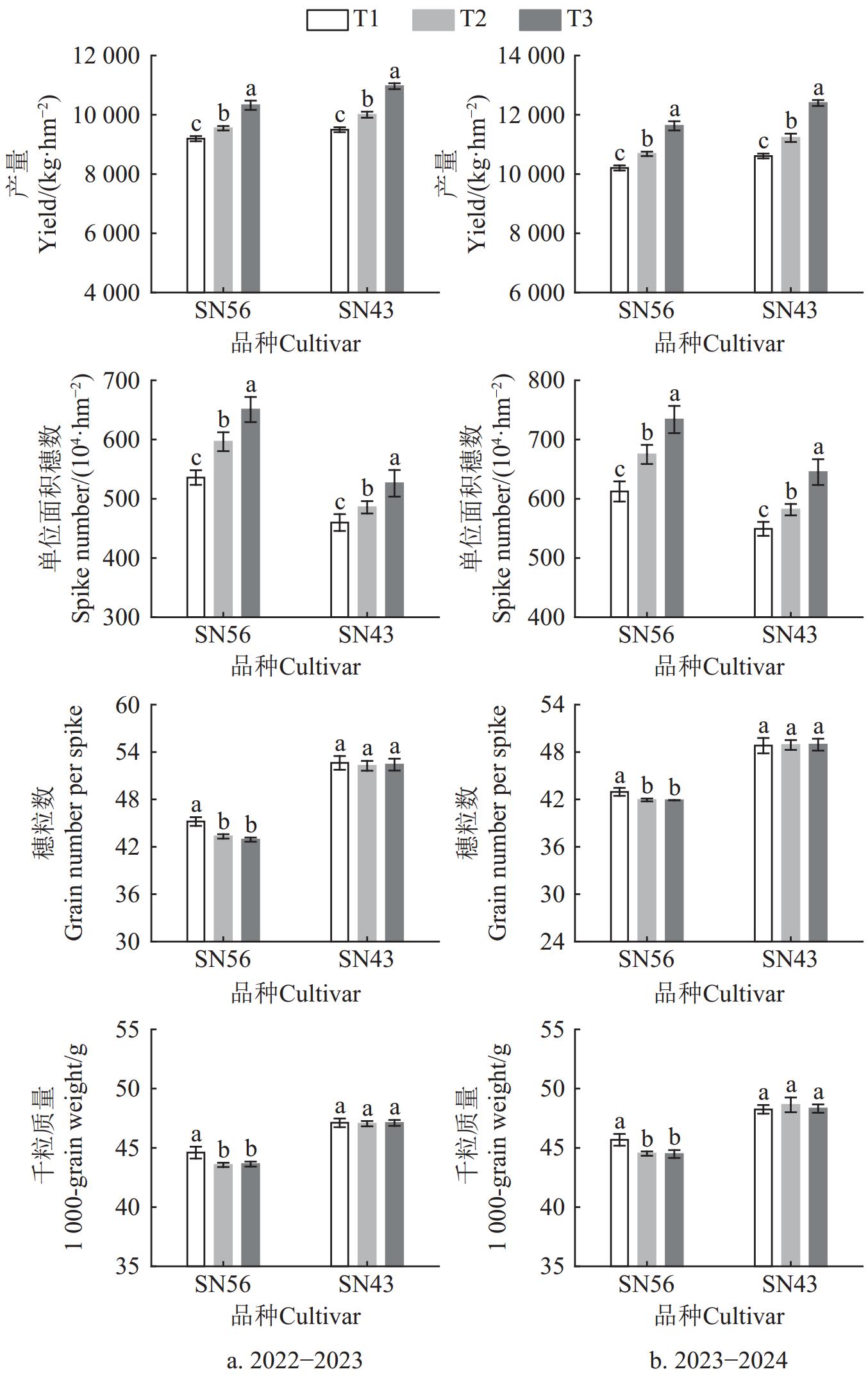
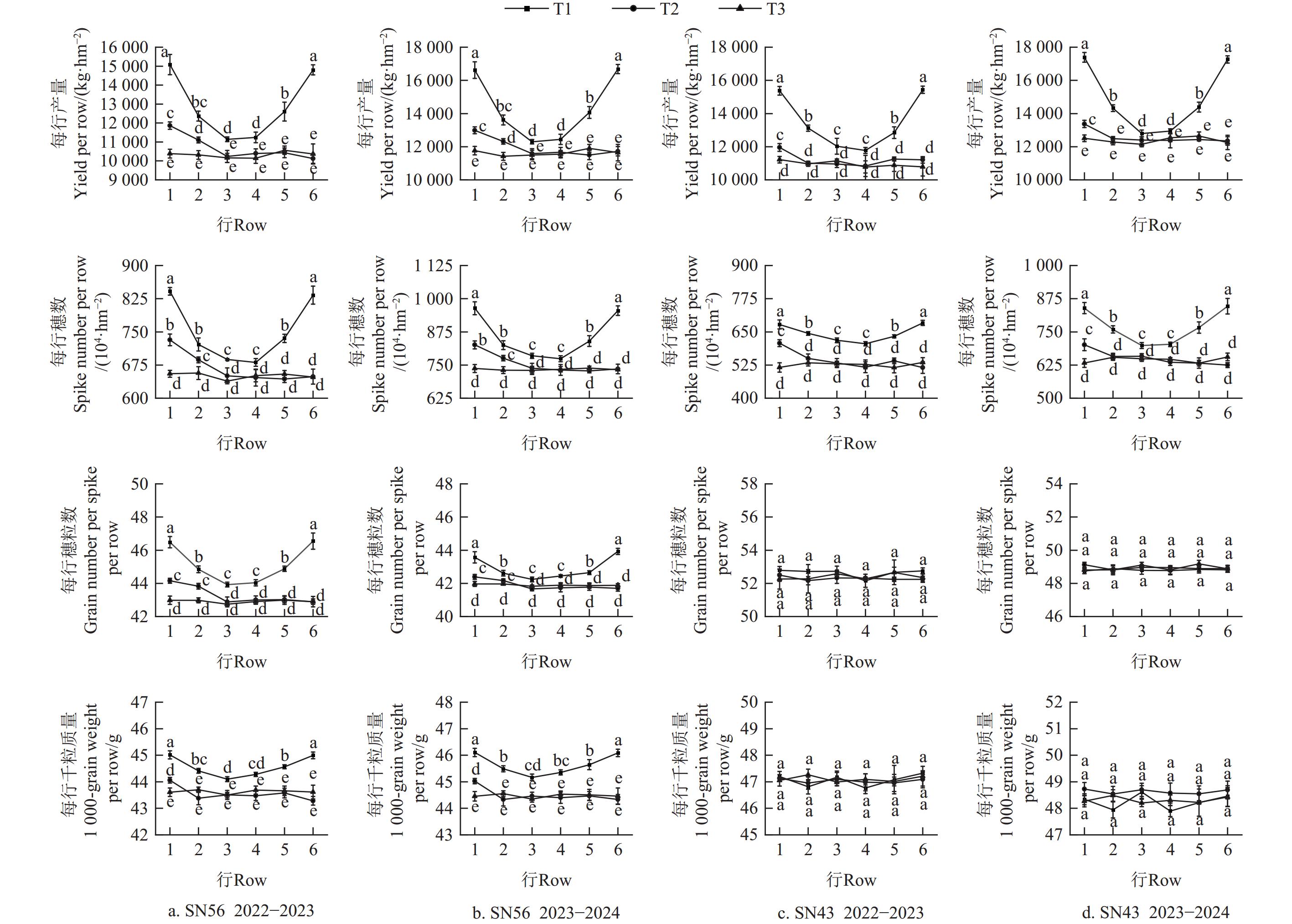
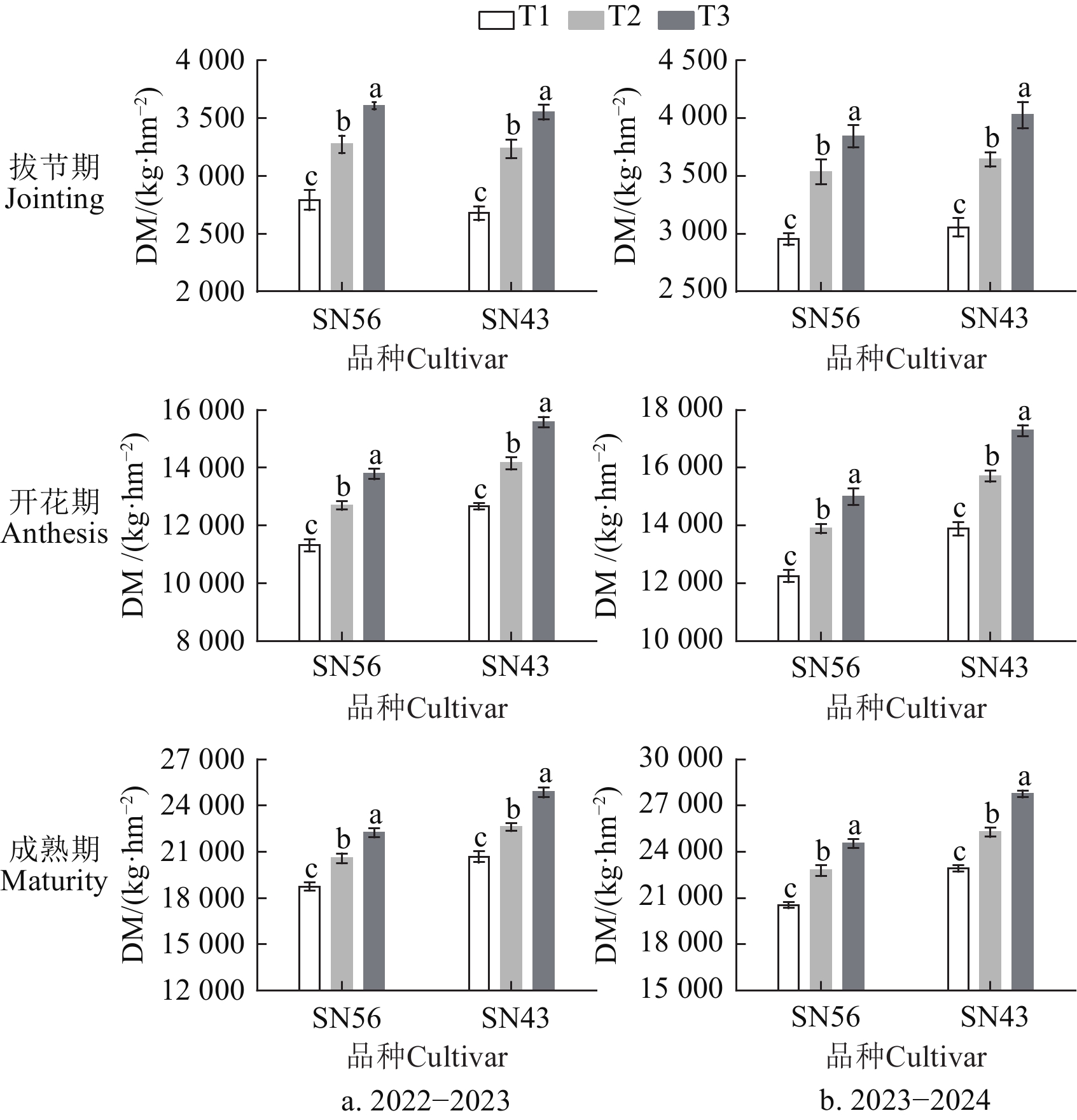
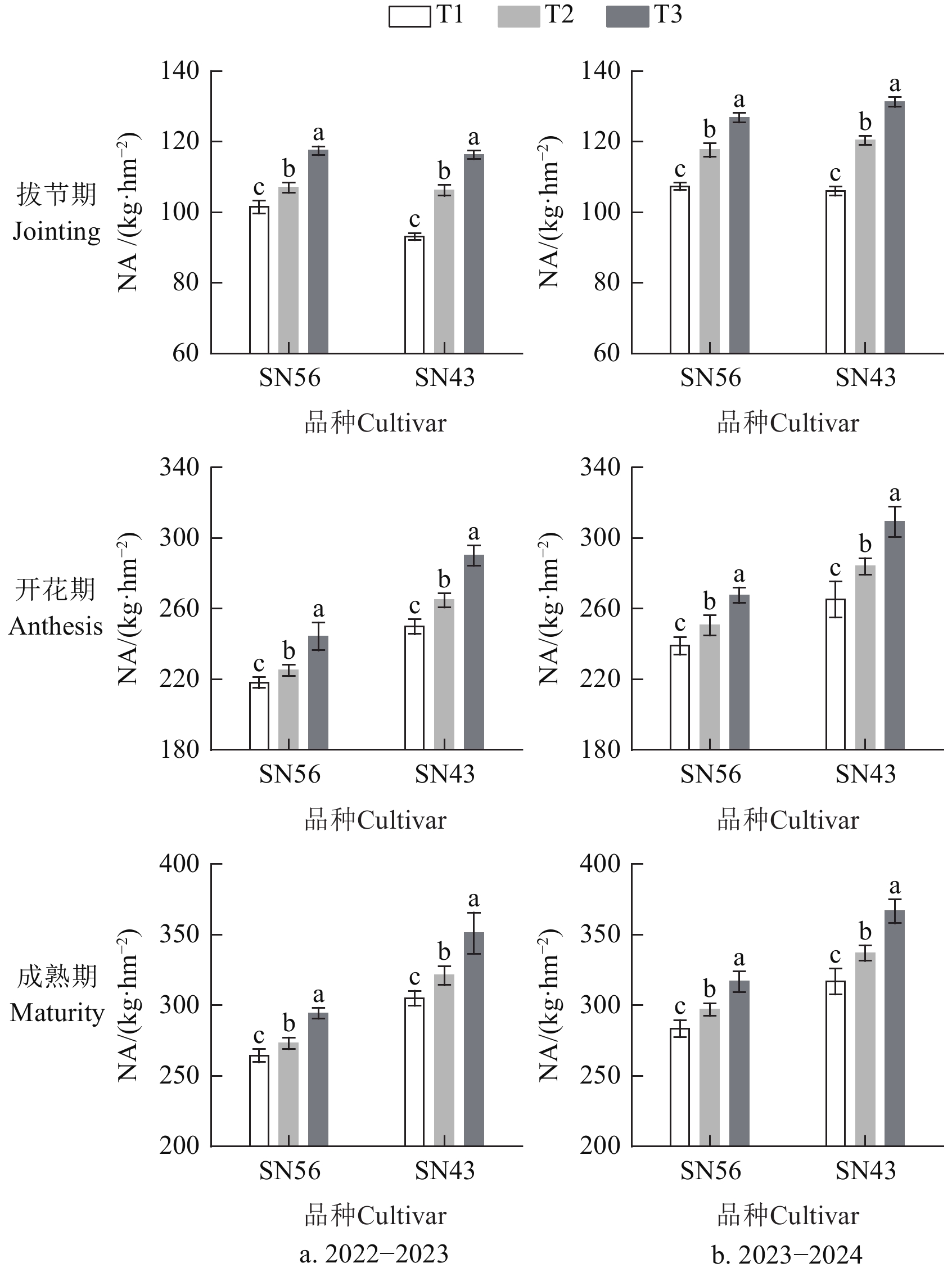
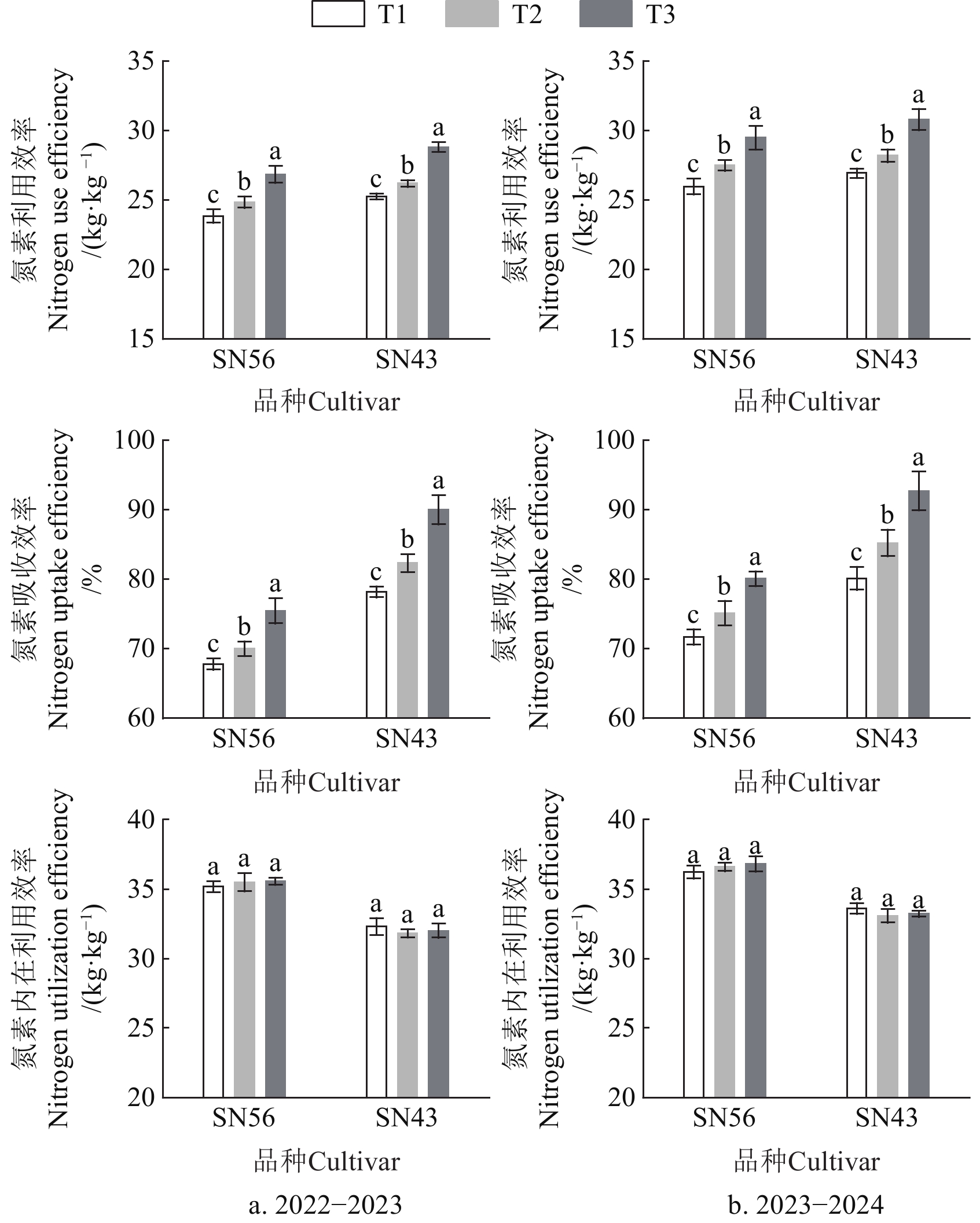
 下载:
下载:












